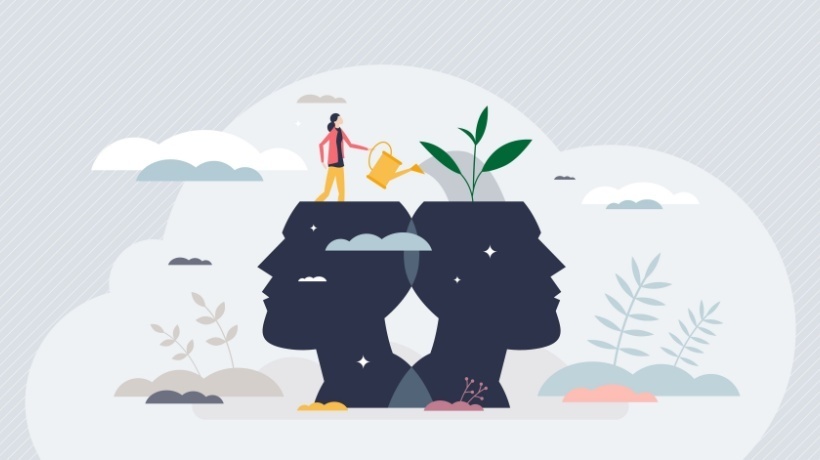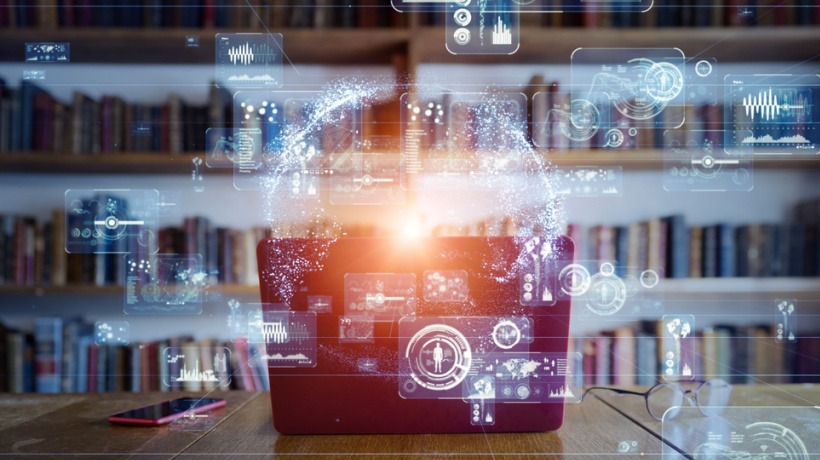Are Our Brains Hardwired To Learn Through Human Interaction?
From their very first day on earth, babies learn by interacting with other human beings. It takes no more than a few minutes to teach a baby how to smile, stick her tongue out, wave her hand in the air – simply by showing. Observing and replicating behavior is the most basic form of learning, but it applies to the way we learn as adults, too.
Have you ever felt the intense, cringeworthy secondhand embarrassment of a comedian being booed off stage, as if you were the one being heckled? Or have you ever witnessed someone bump their elbow on something and immediately felt yourself tense up and say “ouch!” in solidarity with them? These aren’t coincidences.
It’s the reason why when someone smiles at us we can’t help but return the gesture, or why they say yawning is contagious. These instances of empathizing with someone simply by observing a behavior are made possible by mirror neurons [1].
What Are Mirror Neurons?
In order to understand mirror neurons, let’s first examine the study that leads to their discovery. In the 1990s, Italian neurophysiologist Giacomo Rizzolatti and his team conducted a series of experiments to study the neurons that control motor movements in macaque monkeys.
In each experiment, a monkey would perform an action with his hand or mouth, like reaching for a piece of food, and the team would record the corresponding neuron activity. What was surprising, though, is that the same neurons that fired when performing the activity would also fire when the monkeys observed someone else performing the same activity.
This means that our brains are able to adopt the behavior of the person we are looking at and respond as if we are the ones doing the action – which is truly astonishing when you think about the impact these neurons might have had on mankind and the way we have evolved as a civilization.
For example, neuroscientist Vilayanur Ramachandran [2] theorizes that it is thanks to the mirror neuron system that humans have had a snowball effect of technological advances over the last 10,000 years:
“I claim that what happened was the sudden emergence of a sophisticated mirror neuron system, which allowed you to emulate and imitate other people’s actions. So that when there was a sudden accidental discovery by one member of the group, say the use of fire or a particular type of tool, instead of dying out, this spread rapidly, horizontally across the population, or was transmitted vertically, down the generations.
This made evolution suddenly Lamarckian, instead of Darwinian. Darwinian evolution is slow; it takes hundreds of thousands of years. [For example], for a polar bear, to evolve a fur coat, it will take thousands of generations, maybe 100,000 years. [But] a human being, a child, could just watch its parent kill another polar bear, and skin it and put the skin on its body, fur on the body, and learn it in one step. What the polar bear took 100,000 years to learn, a human can learn in five minutes. And then once it’s learned it spreads in geometric proportion across a population. This is the basis. The imitation of complex skills is what we call culture and is the basis of civilization.”
The point he makes is that mirror neurons are what enable humans to spread knowledge so quickly and effortlessly. At its core, this discovery provides a never-before-realized understanding of how we learn and grow. At its core, the mirror neuron system gives new meaning to the important role human interaction plays in learning.
Mirror Neurons + The Digital World
Mirror neurons prove that the basis of human comprehension stems from observing, comprehending, and imitating. But how do we take what we know about mirror neurons and apply it to learning in today’s digital world? After all, the way we learn today in 2018 is much different than 500, 50, or even 10 years ago. Could mirror neurons still play a role today?
Absolutely. While it’s true that online learning is the future of education, a virtual environment does not need to mean an environment without human interaction. The mirror neuron process is just as relevant in an online setting and this is why it’s so important to foster human interactions within eLearning.
The internet itself was designed to be a web, connecting people to one another – and eLearning should be viewed in the same light. Learning courses should aim to replicate the same human interactions that happen in face-to-face settings, and yet many of them have completely ignored this.
Digital Culture At A Scale
Many of today’s eLearning solutions, despite adopting a forward-thinking concept to begin with, are modeled using non-interactive, boring formats. Traditional SCORM modules are designed to be passive, with the learner clicking through slides and following outdated cartoon “guides”.
Education online has replicated the ‘sage on a stage approach’ which has already proven itself to be ineffective, as we showed the importance of active learning in our last article. Furthermore, when human interaction is removed from learning, the brain is denied its most basic instinct: to observe, form a conclusion, and replicate.
Mirror Neurons Are The Key To Stimulating Your Learners
It’s unclear how long exactly the mirror neuron system has been established, but one thing is for sure: the neurons in our brain that adopt the action of others have played a key role in shaping human beings today. And as sure as humans will continue to evolve, mirror neurons will continue to differentiate us as intelligent beings.
Capitalize on what we know about this unique phenomenon by inspiring mirror neuron activity within eLearning! By incorporating human interaction, you create a learning setting where students are able to learn from each other as they go, firing up these mirror neurons and stimulating comprehension. Actions like peer feedback or interactive quizzes will inspire students to discern meaning from the courses more efficiently, creating an enhanced learning experience.
Whether in the real world or online, the same rules apply: to learn we need to interact.
To discover the best practices for implementing digital culture at scale through training, download the eBook Digital Culture At Scale.
References:
[1] What We Know Currently about Mirror Neurons
[2] TED Talk: The neurons that shaped civilization









![Dopamine: The Key To Reaching Your Learning KPIs [Scientific Study]](https://cdn.elearningindustry.com/wp-content/uploads/2018/08/dopamine-the-key-to-reaching-your-learning-kpis-scientific-study-e1535462773286.jpg)